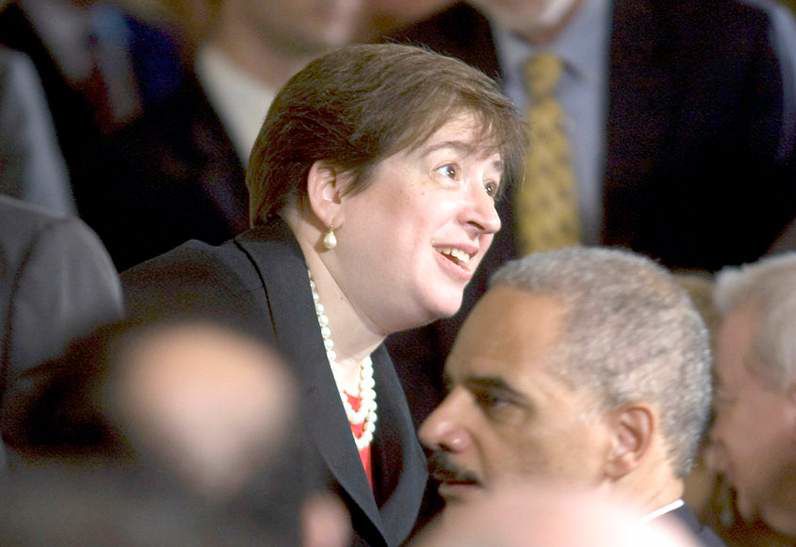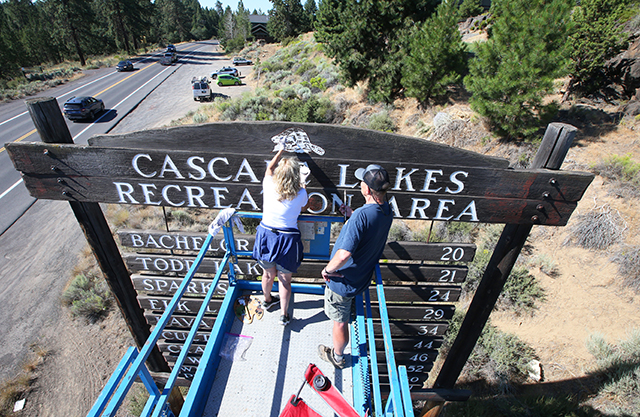Elena Kagan: A climb marked by confidence and canniness
Published 5:00 am Monday, May 10, 2010

- According to one of her classmates at Hunter College High School, Elena Kagan talked early on about becoming a Supreme Court justice.
She was a creature of Manhattan’s liberal, intellectual Upper West Side — a smart, witty girl who was bold enough at 13 to challenge her family’s rabbi over her bat mitzvah, cocky (or perhaps prescient) enough at 17 to pose for her high school yearbook in a judge’s robe with a gavel and a quotation from Felix Frankfurter, the Supreme Court justice, underneath.
She was the razor-sharp newspaper editor and history major at Princeton who examined American socialism, and the Supreme Court clerk for a legal giant, Thurgood Marshall, who nicknamed her “Shorty.” She was the reformed teenage smoker who confessed to the occasional cigar as she fought Big Tobacco for the Clinton administration.
Trending
She was the opera-loving, poker-playing, glass-ceiling-shattering first woman dean of Harvard Law School, where she reached out to conservatives (she once held a dinner to honor Supreme Court Justice Antonin Scalia).
Elena Kagan has been all of these things, charting a careful and, some might say, calculated path — never revealing too much of herself, never going too far out on a political limb — that has led her to the spot she occupies today: the first female solicitor general of the United States, who won confirmation with the support of some important Republicans, and now, at 50, President Barack Obama’s nominee for the U.S. Supreme Court.
In some respects, Kagan’s traits — her desire to build consensus through persuasion, her people skills, her ability to listen to others — mirror those Obama sees in himself. They are qualities that the president hopes will play out in a leadership role on a deeply divided court. While Kagan has cited Marshall as one she admires, some expect her to behave more like the center left Justice David Souter, who retired last year, or the master tactician John Paul Stevens, whom she would replace if confirmed.
“She was one of the most strategic people I’ve ever met, and that’s true across lots of aspects of her life,” said John Palfrey, a law professor who was hired at Harvard by Kagan. “She is very effective at playing her cards in every setting I’ve seen.”
At Hunter College High School in the 1970s, Kagan was a standout in a school of ultra-bright girls. At least one classmate there, Natalie Bowden, remembers she had an ambitious goal: to become a Supreme Court justice.
“That was a goal from the very beginning,” Bowden said. “She did talk about it then.”
Trending
Kagan quickly found a place at The Princetonian, the daily student newspaper at Princeton University, when she arrived there in the fall of 1977.
Her circle of friends was a high-powered one, including Eliot Spitzer, the future governor of New York, who became student body president. Bruce Reed, who would hire her as his deputy when he ran the White House Domestic Policy Council under President Bill Clinton, worked for Kagan at The Princetonian. He wrote “smart-alecky columns, mostly about politics” he said, while she, as editorial chairwoman, seemed “determined to have a serious discussion about the nation’s problems.”
Apart from her life as a student journalist, Kagan also dabbled in politics, working as a summer intern for Rep. Ted Weiss, D-N.Y., and later as an assistant press secretary for Holtzman, who was a congresswoman. In her senior year, she signed a manifesto, along with Spitzer and six others, under the rubric “Campaign for a Democratic University,” arguing for students to have a greater voice in university governance — an effort that fell apart, one member said, when its adherents left for spring break.
She graduated summa cum laude and seemed drawn, friends say, to a career in academia, public service and the law. She did not have to make an immediate choice; in her senior year, Kagan received a fellowship to Worcester College, Oxford, where she obtained a master’s in philosophy.
Upon returning to the United States, Kagan enrolled in law school at Harvard, where, predictably perhaps, she made law review at the end of her second year.
She went on to win two plum clerkships, first for Judge Abner Mikva, of the federal appeals court in Washington, and then for Marshall.
In 1991, having acquired two years of real-world experience practicing law, she joined the faculty at the University of Chicago Law School. That same year, another bright young lawyer and Illinois state senator, Barack Obama, began teaching constitutional law there on the side.
Unlike Obama, who held the title of lecturer, Kagan was hired as a full-time faculty member, on a tenure track. Geoff Stone, the Chicago law professor and former dean who hired her, said Kagan was an instant success.
She was granted tenure in 1995, despite the reservations of some colleagues who thought she had not published enough. Shortly thereafter, Washington beckoned. Mikva was Clinton’s White House counsel. Remembering Kagan as a very bright law clerk — “the pick of the litter” from her year, Mikva said in an interview — he wanted her to be one of his associates.
“Elena thought going ahead in politics was the better path,” said Richard Epstein, a fellow Chicago Law School professor. “I think her preferred path was to stay there an extra year, get a really big administrative position, or a judgeship.”







